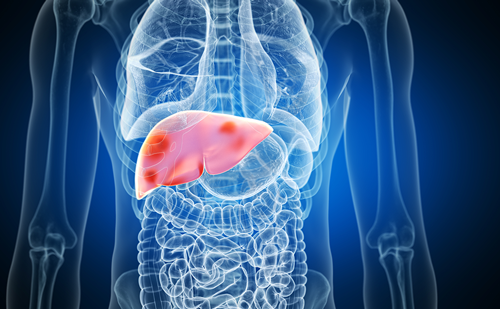Pathogenesis of Foot Ulceration
Pathogenesis of Foot Ulceration
Foot ulcers rarely result from a single pathology: rather they are the interaction of two or more contributory causes that lead to breakdown of the high-risk foot. The neuropathic foot, for example, does not spontaneously ulcerate: it is the combination of insensitivity with either extrinsic factors (e.g. walking bare foot and stepping on a sharp object, or simply wearing ill-fitting shoes) or intrinsic factors (e.g. patient with insensitivity and callus who walks and develops an ulcer), that ultimately results in ulceration.3 Neuropathy is the most important contributory cause in the pathway to ulceration, and together with other causes, is discussed below.
Neuropathy
The association between both somatic and autonomic neuropathy and foot ulceration has been recognized for many years. It is only in the last decade that prospective follow-up studies have confirmed this causative role of somatic neuropathy. Patients with sensory loss appear to have up to a seven-fold increased risk of developing foot ulcers compared with non-neuropathic diabetic individuals.4 Poor balance and instability are increasingly being recognized as troublesome symptoms of peripheral neuropathy, presumably secondary to proprioceptive loss. Peripheral autonomic (sympathetic) dysfunction results in dry skin and, in the absence of peripheral vascular disease, a warm foot with distended dorsal foot veins. This may pose problems in terms of patient education as there is a strong lay belief that all foot problems result from vascular disease: patients may find it difficult to accept that their warm but pain-free feet are at significant risk of unperceived trauma and subsequent ulceration. Thus, when planning preventative educational programmes, it is essential to ensure that a careful explanation of neuropathy in understandable terms is provided.
In practice, peripheral neuropathy can easily be documented by simple clinical examination for evidence of neuropathy: the most important step is to remove the patient’s socks and shoes and look at the feet! Simple tools such as a neuropathy disability score and the monofilament may be used to help to identify the at-risk neuropathic foot.5The identification of the highrisk foot does not require detailed quantitative sensory testing or electrophysiology.
Peripheral Vascular Disease
Peripheral ischemia resulting from proximal arterial disease is recognized as a component cause in the pathway to ulceration in approximately one-third of all cases.3 The ischemic foot is red, dry, and often neuropathic: it is therefore susceptible to pressure from, for example, footwear.
Other Risk Factors
The presence of foot deformity, particularly claw toes and prominent metatarsal heads, is a proven risk factor for ulceration. Similarly, plantar callus accumulation was associated with a 77-fold increase in risk in one crosssectional study, whereas in the follow-up of the same patients, plantar ulcers only occurred at sites of callus in neuropathic feet, representing an infinite increase in risk.Other risk factors include the presence of other microvascular complications, increasing duration of diabetes, increases in plantar foot pressures, peripheral edema and, most predictive of all, a past history of foot ulcers or amputation.5
Prevention of foot ulcers amongst those identified with risk factors is critical if the high incidence of ulcers is to be reduced.There is a suggestion that education and regular podiatric care may result in earlier presentation when ulcers develop.
A few studies have assessed psychosocial factors in the pathway to ulceration. It appears that patients’ behavior is not driven by the abstract designation of being ‘atrisk’: rather it is driven by the patients’ own perception of their risks.Thus if patients do not believe that a foot ulcer lies on the path from neuropathy to amputation, are they likely to follow educational advice on how to reduce ulcer risk?6 It is clear that research in this area is urgently required.
In summary, the most important aspect of diagnosing the foot at risk of ulceration is the regular removal of patients’ shoes and socks followed by a detailed examination of the foot for evidence of neuropathy, vascular disease, deformities, plantar callus, oedema, and other risk factors as noted above.
The Pathway to Ulceration
It is the combination of two or more of the risks factors listed above that ultimately result in diabetic foot ulceration. Studies have shown that the most common triad of component causes subsequently lead to breakdown of the diabetic foot where peripheral neuropathy (insensitivity) deformity (clawing of the toes, prominence of metatarsal heads), and trauma (e.g. footwear).3 Other simple examples of a twocomponent pathway to ulceration are neuropathy and mechanical trauma (e.g. standing on a nail) or neuropathy and thermal trauma (a patient with insensate feet who using a heating pack). Inappropriate use of chemical ‘corn cures’ is another common cause of ulceration. The Patient with Sensory Loss
A reduction in neuropathy foot problems will only be achieved if we remember that patients with insensitive feet have lost their warning signal—pain—that ordinarily brings the patient to their doctor. It is pain that leads to many medical consultations: our training and healthcare is oriented around the cause and relief of symptoms. Thus, the care of the patient with no pain sensation is a new challenge for which we have little training. Much can be learnt about management of the patient with loss of sensation from the management of people with leprosy7: if we are to succeed we must realize that, with loss of pain, there is also diminished motivation in the healing and the prevention of injury
Charcot Neuroarthropathy
Charcot neuroarthropathy occurs in patients with peripheral loss of sensation, autonomic dysfunction (increased blood flow to the foot and dry skin) usually together with unperceived trauma.The patient at risk of charcot neuroarthropathy typically has a warm foot with bounding pulses but complete loss of sensation. Any patient presenting with unilateral warm, swollen foot, with or without symptoms of pain or discomfort, in the presence of good circulation should be considered to have Charcot neuroarthropathy until proven otherwise. Again, this is a preventable disorder for which patient and physician education plays a key role.







